In Africa, sustainable development is undermined, particularly because of the scarcity of water resources, which are necessary for the development of various sectors of activity. This situation of water stress is partly linked to drought, amplified by climate change. On the occasion of the United Nations Conference on Water which takes place from 22 to 24 March 2023 in New York in the United States of America, AFRIK 21 analyzes two resilience solutions: rainwater harvesting and groundwater recharge.
In the face of increasingly frequent droughts on the African continent, many alternatives have been developed by both businesses and governments. These include resource rationalization, desalination of sea water and reuse of treated wastewater. In addition, rainwater harvesting and aquifer recharging are older methods, but they are intelligent for the protection of the planet.
Rainwater harvesting is a technique for collecting and storing rainwater in natural reservoirs or tanks. This process has been applied on the African continent for thousands of years, particularly in Morocco where the national water strategy has placed rainwater harvesting as one of the priorities for mobilizing non-conventional water resources at the national level in the country’s deficit basins, particularly in Oum Er Rbiaâ, Bou Regreg, Tensift, Souss, etc.
There are many rainwater harvesting systems. First, the systems set up at the individual level for domestic or agricultural use. On a larger scale, the retention of runoff water is done through micro-dams or village reservoirs and large dams, more suitable to serve a larger population.
Some countries exploit the benefits of rainfall
Consisting of organic matter, micro-organisms, pesticides, nutrients, acidity and chemical pollutants (copper, lead, zinc, chromium, iron, manganese and polycyclic aromatic hydrocarbons), rainwater is not suitable for human consumption. Also, most countries rely more on this resource to mitigate the effects of water stress in various sectors, including agriculture.
In Morocco, for example, the Office régional de mise en valeur agricole (ORMVA) is currently developing a new hydraulic regulation basin. The reservoir will be used to irrigate 20,000 hectares of farmland in Tadla in the center of the kingdom. This will be the second hydraulic regulation basin in the region, which is considered one of the most important agricultural areas in Morocco. Tadla receives about 300 mm of rainfall per year, much of it in winter (November to March).
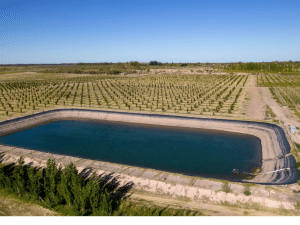
Rainwater storage for irrigation©Sobrevolando Patagonia//Shutterstock
In Dodoma and Singida, Tanzania, water stress is impacting agriculture. To boost farmers’ production and reduce food insecurity, the government launched in August 2022 the construction of ten dams that will collect rainwater to meet irrigation needs. The resource will also be used to supply livestock farmers, as well as households for domestic use (watering the garden, washing the car, etc.).
Kenya, one of the driest countries on the African continent, also plans to take advantage of rainwater to strengthen the resilience of farmers and herders to the drought that causes water stress. In fact, a project launched in September 2021 is expected to develop four rainwater ponds in Homa Bay County, western Kenya.
Preventing water erosion and flooding
If rainwater harvesting is a solution to ensure water supply in Africa in the face of drought, it is even more so in the fight against flooding and water erosion. These phenomena are mainly caused by the intense runoff of rainwater on the surface of the land, leading to soil degradation and reduced agricultural yields.
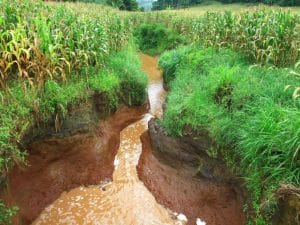
Erosion caused by run-off water©KAMONRAT/Shutterstock
In response to the floods, the Tunisian government has also resumed the recovery of rainwater, especially in the Medjerda basin, a river that originates in Algeria and whose bed is mainly on Tunisian territory. And since December 2020, the Tunisian Ministry of Agriculture, Hydraulic Resources and Fisheries (MARHP) is implementing the Storage and Flood Protection Program (SPCI) there. The rainwater will be used for irrigation and household supply.
In Senegal, the government is also focusing on rainwater retention in response to flooding.
It plans to rehabilitate the rainwater retention basin of the catchment area of the city of Dakar, built in 2005. With its 7.70 hectares, its average depth of nearly 2 m and its storage volume of 120 to 160,000 m3, this basin collects rainwater from Dakar neighborhoods such as Bourguiba, Patte d’Oie and Grand-Yoff, by means of a water pumping system to drain them into Hann Bay.
In mid-August 2021, the inhabitants of several districts of Dakar found their feet in the water. To the dismay of tens of thousands of residents, this scenario is repeated every year during the rainy season that runs from July to September in Senegal.
The other advantage of rainwater harvesting is the preservation of water reserves, especially underground, to which Africans are also turning in this context marked by water stress.
Groundwater, a certain potential
Groundwater, which makes up nearly 99% of the world’s freshwater reserves, plays a central role in adapting to water stress. According to the United Nations Educational, Scientific and Cultural Organization (UNESCO), groundwater provides half of the water withdrawn for domestic use by the world’s population, including drinking water for the vast majority of the rural population, and about 25% of all water withdrawn for irrigation purposes.
Sub-Saharan Africa would be the region that would exploit these resources the least, with only 5% of land irrigated from groundwater. Yet, groundwater use could promote economic growth by increasing the area of irrigated land, thereby improving agricultural yields and crop diversity. Tapping into groundwater could also improve drinking water supplies in sub-Saharan Africa, where an average of 418 million people still lack access to water, according to the United Nations Children’s Fund (UNICEF).
Read Also – AFRICA: Resource and source of life, water at the heart of sustainable development
In addition to the lack of funding that slows down the exploitation of underground reserves today, this natural resource remains poorly understood in sub-Saharan Africa and, as a result, is undervalued, poorly managed, and even wasted, causing its outright degradation in some areas.
Unlike Sub-Saharan Africa where groundwater is still abundant, in North Africa, aquifers are overexploited to compensate for the effects of water stress. Groundwater depletion can also lead to increased costs, technical complexity, and energy demands associated with groundwater extraction, increased water shortages caused by the drying up of wells, aquifer areas, or entire aquifers, degradation of groundwater-dependent ecosystems and non-supply groundwater services, competition between groundwater use sectors or individual well users, and increasingly unequal access to groundwater, including loss of equity between generations.
Artificial recharge of aquifers is needed
Among the states overexploiting groundwater reserves in North Africa is Morocco. In the Cherifian kingdom, each inhabitant currently has only 500 cubic meters of fresh water per year, compared to 2,500 cubic meters in 1960 according to the United Nations (UN). In addition to the rationalization of water through modern techniques and the development of non-conventional water, Morocco now wants to rely on the artificial recharge of aquifers to avoid total depletion.
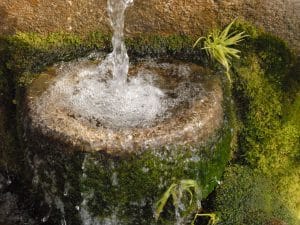
Groundwater©Elie Ghanem/Shutterstock
The recharge of aquifers is a practice that aims to increase the volumes of groundwater available, by promoting, by artificial means, the infiltration of surface water, treated wastewater, desalinated water or rainwater to the aquifer.
In Morocco, studies are underway to assess the potential for increasing the groundwater resources of the Draa Oued Noun basin in the Zagora province. The Draa Oued Noun Water Basin Agency appointed the Guir Water Basin Agency in September 2022 to carry out these studies over 11 months to develop an implementation project.
Also in Morocco, the project for the artificial recharge of the Haouz water table from the Wadi Ghmat has made it possible to increase water supply to more than 1.6 million people. The management of the Tensift Hydraulic Basin Agency (ABHT) implemented this project, which received funding from the African Water Facility (AWF), a multilateral water fund administered and managed by the African Development Bank (AfDB), which supports and facilitates resource mobilization.
Morocco’s national water strategy calls for the strengthening of artificial groundwater recharge, with an average volume of 270 million m³ per year by 2030.
Inès Magoum

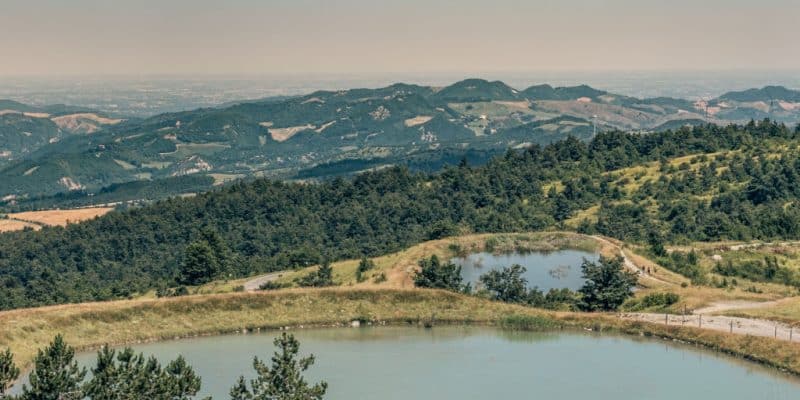
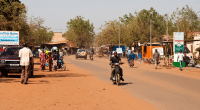

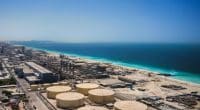
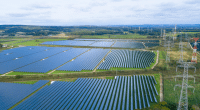


You must be logged in to post a comment.